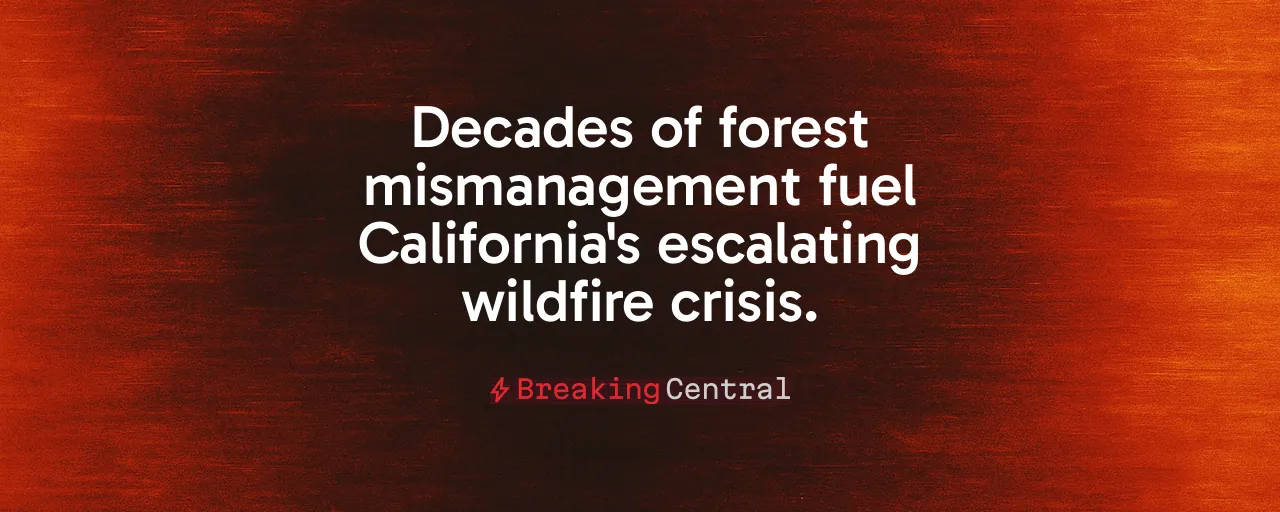A State in Flames
California's forests are burning, and the crisis shows no signs of slowing. Governor Gavin Newsom's recent announcement, set for July 1, 2025, in Placer County, promises new wildfire-prevention measures for federal lands, which cover 57 percent of the state's forests. Branded with the slogan 'Make America Rake Again,' the plan arrives as the state grapples with soaring insurance costs and the aftermath of January's devastating Los Angeles firestorms. This initiative aims to tackle the crisis's root causes, and its implementation will be scrutinized to ensure it moves beyond mere bureaucratic additions.
The stakes are staggering. Wildfires in January 2025 alone destroyed over ten thousand structures, with property losses reaching up to $164 billion. Homeowners in fire-prone areas face insurance rates that make staying put nearly impossible. The state's FAIR Plan, a last-resort insurance program, teeters under growing exposure, threatening taxpayers with the bill. The public demands action, and effective solutions require more than press conferences and catchy slogans.
Decades of Neglect
The heart of California's wildfire problem lies in decades of mismanaged forests. Overgrown vegetation, left unchecked, turns forests into tinderboxes. Research from the National Fire Protection Association highlights a critical issue: lack of funding and staff has crippled mitigation efforts. While the state boasts a $4 billion wildfire budget, reports indicate that CAL FIRE's resource-management funds were slashed by half, even as billions flowed to urban greening and electric vehicles. This misallocation leaves forests choked with fuel, ready to ignite at the smallest spark.
Historical practices offer clues to better management. Before European settlement, Indigenous tribes burned an estimated five million acres annually, keeping ecosystems balanced. Twentieth-century fire suppression, however, allowed fuel to accumulate, setting the stage for today's mega-fires. The 2018 and 2020 fire seasons exposed these flaws, prompting emergency orders to bypass environmental reviews for vegetation projects. Red tape persists, delaying critical work.
Bureaucracy Blocks Progress
Environmental regulations, while well-intentioned, often stall lifesaving projects. The California Environmental Quality Act requires lengthy reviews, even for urgent fuel-reduction work. During the Los Angeles firestorms, empty reservoirs, like the Santa Ynez facility, left firefighters scrambling. Streamlining these processes could unlock faster, more effective responses. Lawmakers in Sacramento, including Republican leaders, have pushed for permanent exemptions to speed up fire-safety projects, arguing that bureaucratic delays contribute to loss of life.
Federal mismanagement adds another hurdle. With 57 percent of California's forests under U.S. Forest Service control, state efforts alone fall short. Recent federal budget cuts, attributed to policies under President Donald Trump, have reduced staffing and resources, leaving gaps that California struggles to fill. Intergovernmental agreements could bridge this divide, but they require political will on both sides.
Empowering Homeowners
Responsibility extends beyond government. Homeowners in the wildland-urban interface, where 45 million U.S. homes sit at risk, play a critical role. Studies show that homes built to post-2008 ignition-resistant codes are far less likely to burn. Creating defensible space, clearing brush, and retrofitting properties can save neighborhoods. Policymakers can provide incentives, such as tax credits, to encourage these upgrades. Personal accountability, paired with practical support, strengthens community resilience.
The insurance crisis underscores this need. As insurers flee high-risk areas, driven by state-imposed rate caps, homeowners face dwindling options. Market-based reforms, allowing rates to reflect true risk, could stabilize the industry while encouraging property owners to invest in prevention. An overreliance on public programs like the FAIR Plan shifts the burden to taxpayers, an unsustainable path.
Practical Steps Forward
Solutions exist, grounded in common sense. Large-scale mechanical thinning and timber harvesting can clear excess fuel while supporting the timber industry. Robust water infrastructure, including maintained reservoirs, ensures firefighters have the resources they need. Strategic fuel breaks along evacuation routes, coupled with expanded cultural burning led by Indigenous tribes, can protect communities. These targeted efforts address immediate dangers, prioritizing them over flashy climate initiatives.
Bipartisan agreement is emerging on key measures. Stakeholders, from firefighters to environmental groups, back prescribed burns near towns and modernized building codes. Sharing costs between state and federal agencies, while streamlining environmental reviews, could accelerate progress. These steps, rooted in evidence and local needs, cut through political noise to deliver results.
A Call to Action
California's wildfire crisis demands urgency. Mismanaged forests, bureaucratic delays, and misplaced priorities have fueled a cycle of destruction. Practical solutions, from thinning forests to empowering homeowners, offer a way out. By focusing on what works, rather than chasing headlines, the state can protect lives and livelihoods.
The path ahead requires cooperation. State and federal leaders must align on shared goals, leveraging partnerships to maximize impact. Homeowners, too, have a role, taking steps to safeguard their properties. Together, these efforts can tame the flames that threaten California's future.
Time is short. With peak fire season underway, the choices made today will shape the state for decades. Prioritizing accountability, efficiency, and proven strategies can rebuild trust and resilience. California deserves solutions that match the scale of the challenge, and the moment to act is now.
